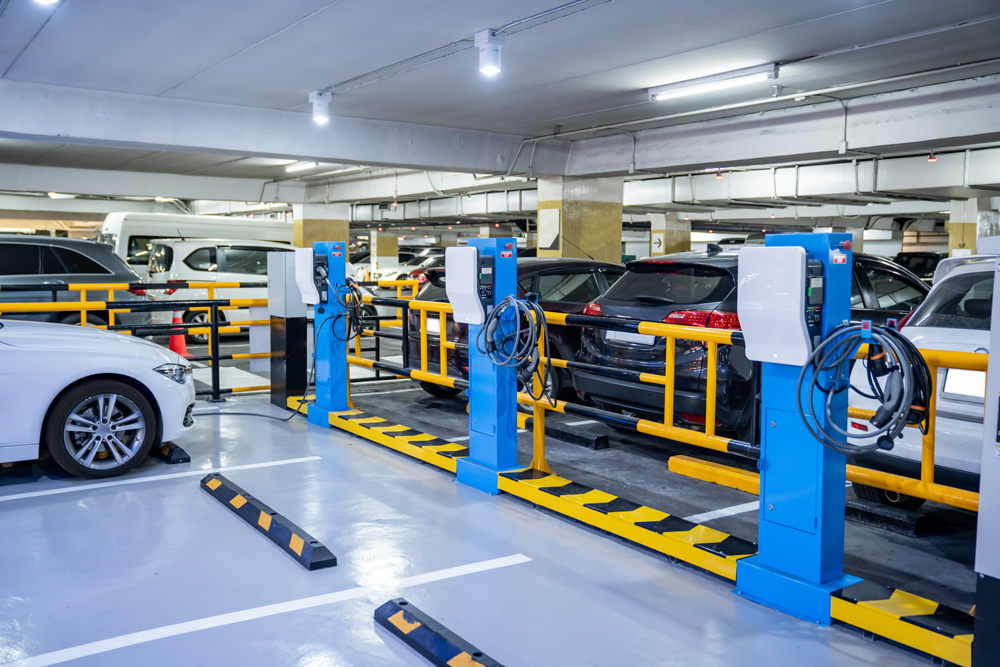Changing the Auto Game

The increasing demand and favorable Government policies indicate that India could be achieving a substantially high penetration of electric vehicles in the near future. With charging stations and other requisites being put in place, let’s look at the crucial role semiconductors play in helping boost the EV infrastructure…
The Automotive industry alone is a major industrial and economic force. Responsible for making over 60 million cars and trucks worldwide yearly, the industry, at present, is undergoing a paradigm shift, trying to make a quick switch towards alternative energy options. India is also running in the same league trying to invest in this electric mobility shift. This thought has gained momentum after keeping various factors in mind including the burden of oil imports, global climate change issues, rising pollution, and so on.

Growth of EV in India
To encourage electric mobility in India, the Government of India (GoI) has also proposed several changes in the Central Motor Vehicles Rules, 1989. Recently, the GoI has proposed to exempt Battery Operated Vehicles (BOVs) from the payment of fees for issue or renewal of Registration Certificate (RC) and assignment of the new registration mark.
It has also modified the FAME-II (Faster Adoption and Manufacturing of Electric vehicles – second phase) scheme to increase the subsidy for electric two-wheelers. The Government has also increased demand incentive by 50 percent for electric two-wheelers to `15,000 per kWh from the earlier uniform subsidy of `10,000 per KWh for all-electric vehicles (EVs) and hybrids, except buses.
There is also no doubt that the penetration of Battery Electric Vehicles (BEVs) has increased significantly in the last five years. With several automakers and start-ups working on respective products and tech-enabled gears, India aims to become a major global vehicle market.
EV infrastructure
The growth of the e-mobility sector in India also demands EV charging stations. The charging infrastructure is an important factor that determines the adoption trends of EVs in the country. The scarce battery technology in EVs needs charging from time to time depending upon the size and capacity. Therefore, charging stations are essential for the sustainable operation of EVs.The charging requirement depends on both the kind of vehicle and the utility purpose simultaneously. According to the NITI Aayog report, India could achieve high penetration of EVs by 2030. The GoI has set a target to electrify 70 percent of all commercial vehicles, 30 percent of private cars, 40 percent of buses, and 80 percent of two-wheelers and three-wheelers by 2030.

Not just the Indian Government but the industry giants too have been quite hopeful about the growth of EVs and the charging stations in India. Going by the developments in the overall EV charging ecosystem, India is gradually picking up the pace.
Global leaders in innovation and technology like Mitsubishi Electric are increasingly investing in charging station infrastructure development.
Mitsubishi Electric manufactures semiconductors and devices including power modules and high-power devices that handle the highly efficient control of power. These miniaturized Semiconductor Integrated Circuits (ICs) for system controls and power semiconductor devices play a key role in EV charging infrastructure.
An EV charging station (DC Type) has two stages of power conversions while transferring energy from a utility supply to an electric vehicle. In the first stage, alternating current (AC) is converted to direct current (DC) with power factor control to keep the stability of utility.
Meanwhile, in the second stage, DC is again converted into DC which controls charging voltage level as per vehicle requirement. In both stages, power semiconductors are used to convert and control the smooth flow of energy.
The Government of India has increased demand incentive by 50 percent for electric two-wheelers to `15,000 per kWh from the earlier uniform subsidy of `10,000 per KWh for all-electric vehicles (EVs) and hybrids, except buses.
While converting AC into DC and controlling the charging voltage, power semiconductors lose some part of their energy in the form of heat. These energy losses decide the efficiency of DC chargers as well as the size of the cooling system, which, in turn, will decide the size of a DC charger.
So, for the best efficiency and a compact DC charger system, the performance of power semiconductors is one of the key factors. Nowadays, Silicon Carbide (SiC) is also used to improve the performance of power semiconductor devices. There is no denying that this technology will help in giving a boost to EV infrastructure.
Like Mitsubishi Electric, there’s a long list of global leaders providing their support in one or another way in bringing e-mobility on the ground. They are also searching for alternative ways of sourcing power as there’s a fear that EVs might run out of power between charging points.
Not to mention, the EV ecosystem is dependent on the Government policy intervention, participation of private sectors, and, of course, the technological innovations taking place on the EV-charging front. So, it’s important to keep an eye on these developments too.
The EV charging stations are the backbone of the e-mobility sector and building it the right way will undoubtedly make EV adoption higher in India.
Image source: Magic Wand Media




 Facebook
Facebook.png) Twitter
Twitter Linkedin
Linkedin Subscribe
Subscribe